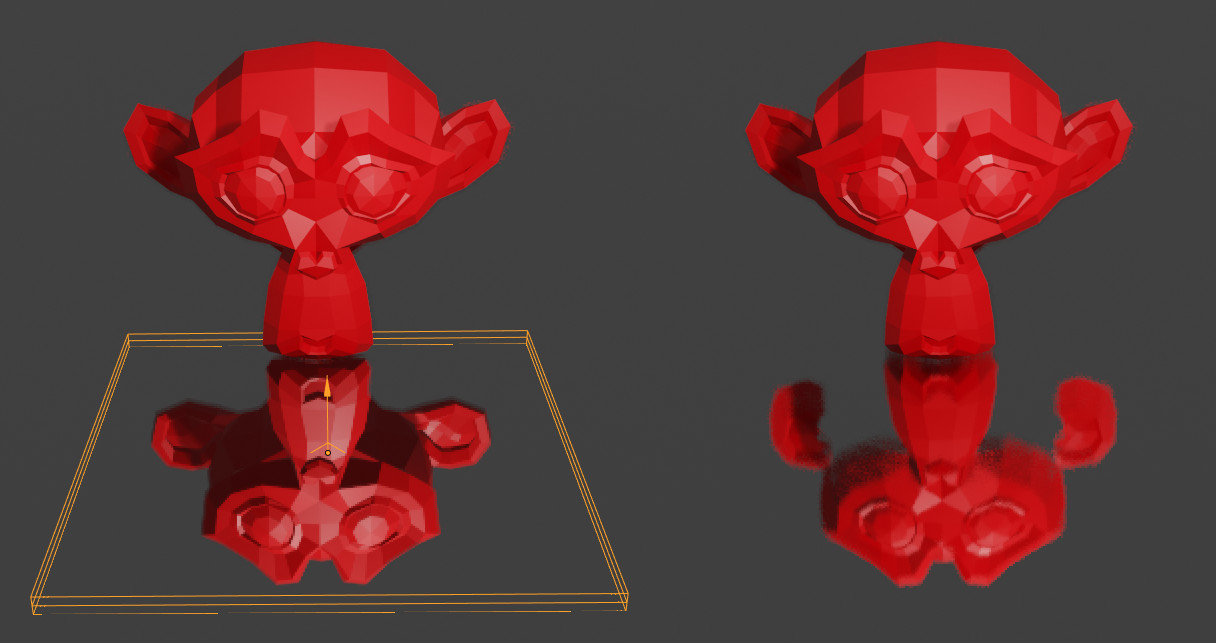Screen Space Reflections¶
If this effect is enabled, all Materials will use the depth buffer and the previous frame color to create more accurate reflection than reflection probes.
If a Reflection Plane is near a reflective surface, it will be used as the source for tracing rays more efficiently and fix the partial visibility problem.

However, the reflected color will not contain the following effects: Subsurface scattering, volumetrics, screen space reflections, screen space refractions.
Reference
| Panel: |
|---|
- Refractions
- Screen space refractions work the same way as screen space reflections and use the same parameters. But they are not enabled by default on all surfaces. Enabling it will have a small performance cost. You need to enable them in . Materials using screen space refractions will not be able to cast screen space reflections.
- Half Resolution Trace
- Use half resolution ray tracing. Only cast a ray for every fourth pixels. Enabling this option reduces drastically video memory usage and increased performance at the cost of quality.
- Trace Precision
- Increases precision of the ray trace but introduces more noise and lowers the maximum trace distance. Increased precision also increases performance cost.
- Thickness
- How thick to consider the pixels of the depth buffer during the tracing. Higher values will stretch the reflections and add flickering. Lower values may make the ray miss surfaces.
- Edge Fading
- Smoothly fade out the reflected pixels if they are close to a screen edge. The unit is in screen percentage.
- Clamp
- Clamp the reflected color intensity to remove noise and fireflies.
Ver también